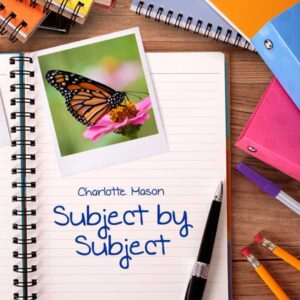60-day returns • free shipping on USA orders $129+


Charlotte Mason used a two-faceted approach to teaching science that was very effective: systematic studies and spontaneous discovery. The systematic studies were accomplished through reading and narrating living science books. The spontaneous facet was added through doing nature study.
Living Science Books & Narration
Just as with teaching history, living books and narration provide many fertile educational opportunities with teaching science. Remember, a living book can be written in story form or in a conversational tone directed to the reader; but whichever style it uses, a living science book should make it easy to picture what is being talked about.
In the younger grades you can easily read aloud a living science book to all your children in grades 1–6 and have them narrate it. You will find delightful living science book suggestions combined with nature poetry, simple experiments, and outdoor projects in our living science studies, like Outdoor Secrets with the Outdoor Secrets Companion or Pond and Stream with the Pond and Stream Companion.
Once the students get to the upper grades, it usually works best to have each child study those upper-level sciences individually. Charlotte sometimes used a textbook for higher-level science topics. Not all advanced science details can be comprehensively explained and practiced in story form. But on those occasions we can couple a conversational science textbook with a good living book to introduce or supplement the topic and help the student make a personal relation and want to learn more details. We’ve listed some suggestions of both conversational textbooks and living science books in our SCM Curriculum Guide.
Nature Study
But just reading about the world around us is not a full education; children need opportunities to experience that world for themselves. Nature study lays a great foundation on which to add the science readings. As our children observe different elements and living creatures outside, they form a personal relation with those things and are ready to learn more about them.
Nature study is not hard to do and can provide a nice break from indoor studies during your week. Simply get each child a blank sketchbook and some colored pencils, and grab a field guide or two. Then once a week go outside and look, listen, smell, and feel. Record your observations in writing and drawing. What is the weather like? What does the sky look like? What do you see by way of plants and animals? What are the insects doing and where? What does your favorite tree look like today?
Use the field guides to help you label your drawings. Spend time observing the habits of various creatures and plants. Check on them at different seasons of the year to see what is happening. Over time you will gain at least a “nodding and naming acquaintance,” and probably an even deeper connection, with God’s creation. That is time well spent.
Journaling a Year in Nature is a sturdy and beautiful nature journal that walks you through the seasons of the year, giving gentle prompts of nature items to look for and timely encouragement every week.
If you would like to read Charlotte Mason’s thoughts about nature study in her own words, Hours in the Out-of-Doors: A Charlotte Mason Nature Study Handbook compiles her writings on the subject, combined with modern-day examples and other inspiring nature quotes. It makes a great reference book for the teacher.
Podcast: Play in new window | Download
